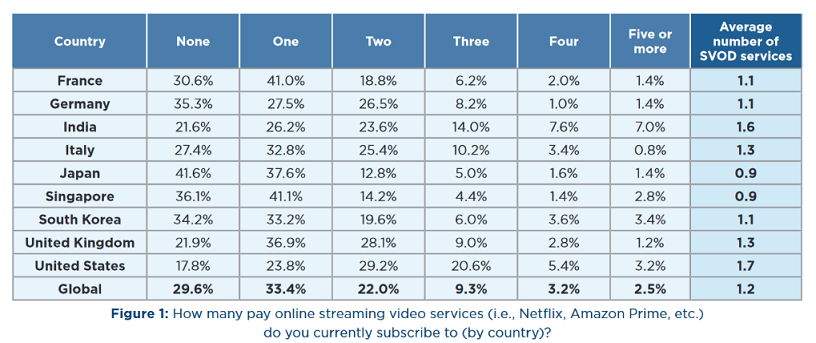 Consumers have more options for watching online video than ever before, and higher expectations for quality viewing experiences.
Consumers have more options for watching online video than ever before, and higher expectations for quality viewing experiences.
Whether you are just beginning to investigate options for distributing your video content, or have been providing OTT services for a while, achieving your business objectives in this highly competitive and rapidly changing market is challenging. Consumers have ever more options for watching online video, and higher expectations for quality online experiences than ever before. To grow and retain a loyal audience, it’s essential to provide the best OTT experiences. To help you better understand and address the top challenges of viewers, here is what was identified in Limelight Network’s 2019 “State of Online Video” report:
1. Strong Competition – To feed their appetite for online video and content preferences, viewers are willing to subscribe to multiple OTT services. Globally 67% of viewers subscribe to one or more service.
Younger viewers age 18-45 are especially likely to do so.
2. Quality of Experience – Increased competition means OTT providers must provide great content and the best viewing experiences in order to retain an audience. As viewership of online video increases, so do expectations for performance and quality. The data is clear: online viewers expect “broadcast quality” experiences and are increasingly less tolerant of rebuffering.
For OTT providers, the challenges are to ensure consistent high- quality global delivery, minimizing rebuffering, and effectively handling traffic spikes, especially for live online streaming.

3. Growing Variety of Viewing Devices – Online audiences expect to be able to watch online video on the devices of their choice. In addition to smart phones, computers and tablets, they also watch from streaming devices, smart TVs, set-top boxes and video game consoles.

With a greater variety of devices comes the requirement to support multiple video formats for delivery, which means detecting the requesting device type and automatically formatting video correctly for each device type. And, of course, as noted earlier, the demand for a broadcast quality experience on every device, every time, is necessary to keep your audience engaged.

4. Live Streaming Latency – Online live streaming is a tantalizing growth area for OTT providers and viewers, but overcoming the delay from a TV broadcast remains a hurdle. For example, viewers age 26 – 60 would stream more sports online if it was not delayed from the broadcast. For OTT providers streaming live events, lower latency would open opportunities to interact with viewers.
Online live streaming on the congested internet often results in low quality video and rebuffering. To improve video quality, today’s HTTP-based video streaming protocols such as HLS and MPEG-DASH, segment video into chunks that are buffered before playback. While this improves video quality, it introduces latency that can be one minute or more. New streaming technologies are required to solve this challenge.

In addition to the issues highlighted by viewers themselves in our survey, there are two other critical challenges facing OTT providers:
Global Audience Reach and Scaling for Peak Traffic Spikes – To maximize your audience size it’s important to have a video distribution strategy that enables consistent high-quality delivery to viewers anywhere. Along with large audience size, comes the possibility for popular video programs and live event action to drive rapid ramp up in viewers logging in to watch. Also essential is sufficient delivery network capacity to support the traffic load.
Protecting Video Content – Whether you create your own original content, or license some or all the content you distribute, you will need to have protections against unauthorized uses in place by restricting access to subscribers, or other authorized viewers, without impacting viewing quality. Addressing content protection measures can be complex if you don’t have in-house expertise.


